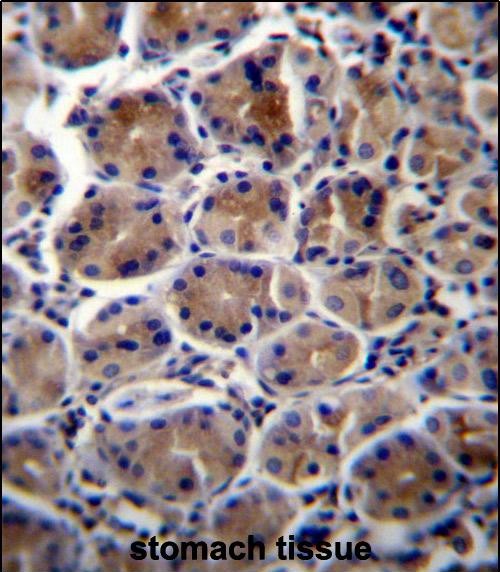

| WB | 1/1000 | Human,Mouse,Rat |
| IF | 咨询技术 | Human,Mouse,Rat |
| IHC | 1/100-1/500 | Human,Mouse,Rat |
| ICC | 技术咨询 | Human,Mouse,Rat |
| FCM | 咨询技术 | Human,Mouse,Rat |
| Elisa | 咨询技术 | Human,Mouse,Rat |
| Aliases | Sodium/potassium-transporting ATPase subunit beta-3, Sodium/potassium-dependent ATPase subunit beta-3, ATPB-3, CD298, ATP1B3 |
| Entrez GeneID | 483 |
| WB Predicted band size | 31.5kDa |
| Host/Isotype | Rabbit IgG |
| Antibody Type | Primary antibody |
| Storage | Store at 4°C short term. Aliquot and store at -20°C long term. Avoid freeze/thaw cycles. |
| Species Reactivity | Human |
| Immunogen | This ATP1B3 antibody is generated from rabbits immunized with a KLH conjugated synthetic peptide between 241-270 amino acids from the C-terminal region of human ATP1B3. |
| Formulation | Purified antibody in PBS with 0.05% sodium azide. |
+ +
The ATP1B3 antibody targets the beta-3 subunit of Na+/K+-ATPase, a critical transmembrane protein responsible for maintaining electrochemical gradients by transporting sodium and potassium ions across cell membranes. As part of the ATP1A/ATP1B heterodimer, ATP1B3 regulates enzyme stability, membrane localization, and ion transport efficiency. Unlike other beta subunits (β1. β2), ATP1B3 exhibits tissue-specific expression, prominently found in neurons, skeletal muscle, and certain cancer cells, suggesting specialized roles in cellular physiology.
Research using ATP1B3 antibodies has highlighted its involvement in neurological functions, muscle contraction, and cancer progression. In neurodegenerative diseases, altered ATP1B3 expression correlates with disrupted ion homeostasis, potentially contributing to pathology. In oncology, ATP1B3 is upregulated in gliomas and leukemias, linked to cell proliferation and drug resistance. Antibodies against ATP1B3 enable detection via techniques like Western blot, immunohistochemistry, and immunofluorescence, aiding mechanistic studies and biomarker discovery.
Recent studies also explore ATP1B3's interaction with signaling pathways, including Src kinase and mTOR, implicating it in broader regulatory networks. However, antibody specificity remains a consideration due to structural homology among beta subunits. Validated antibodies are crucial for distinguishing ATP1B3 in complex biological systems, advancing its therapeutic targeting in diseases like cancer and neurodegeneration.
×